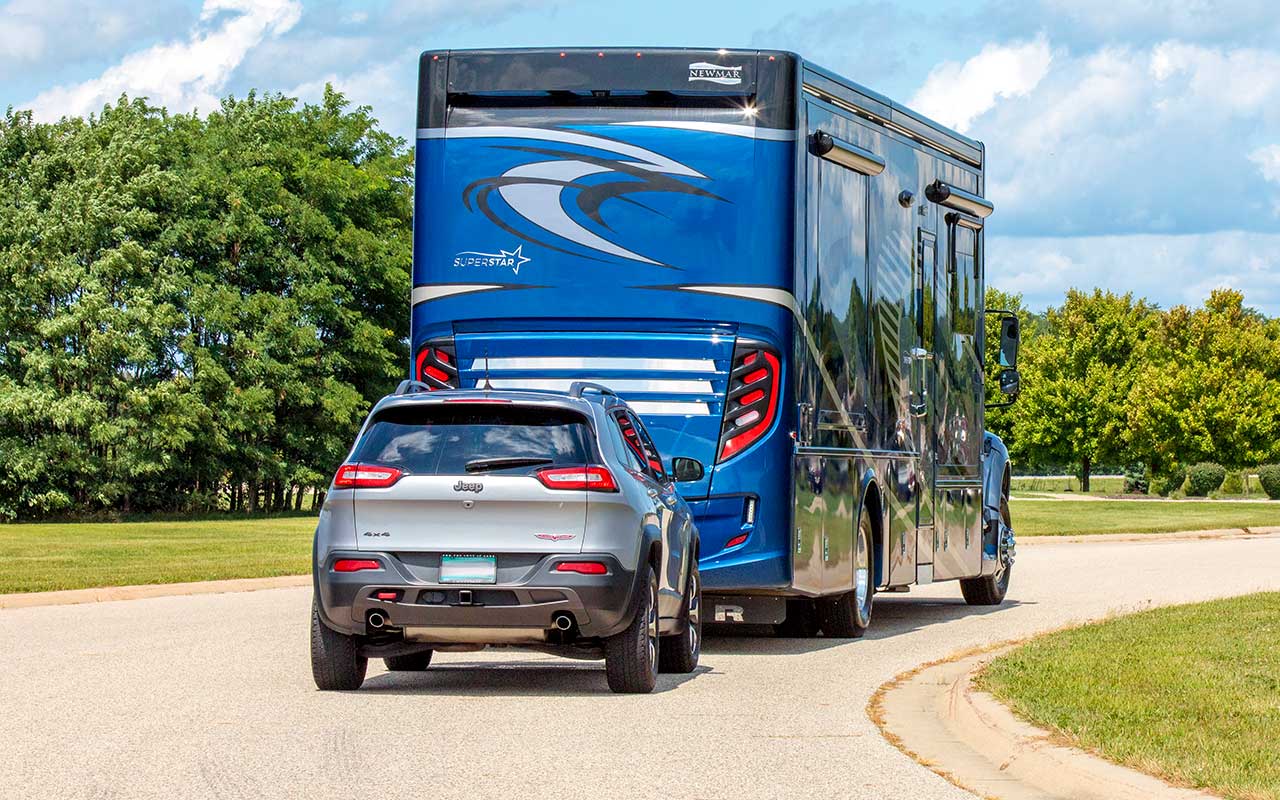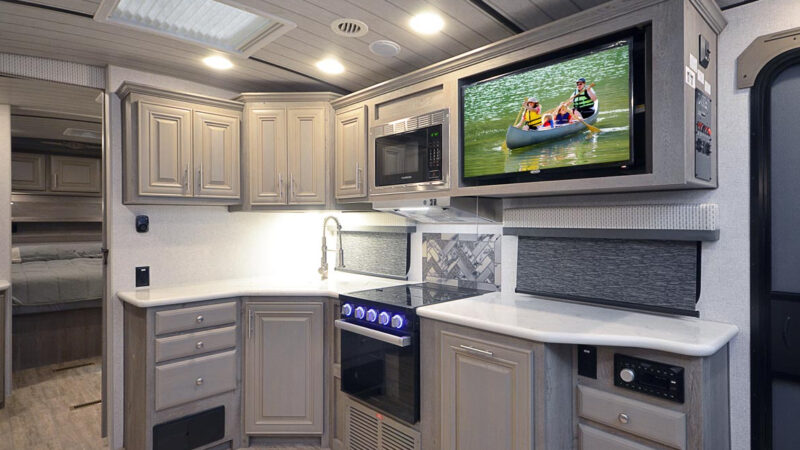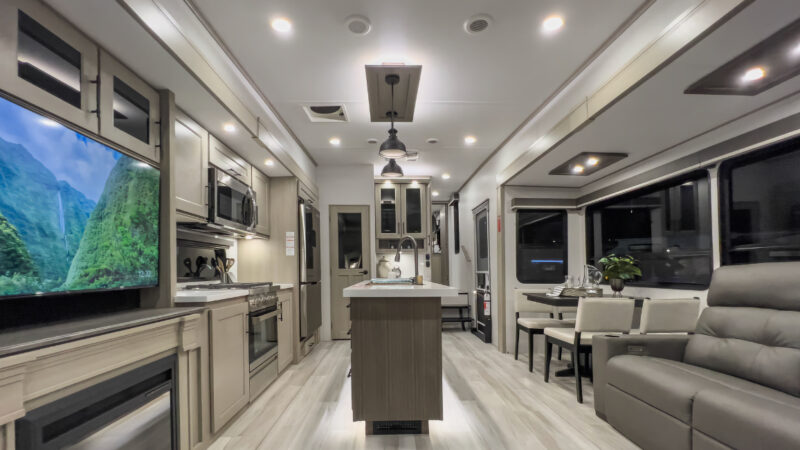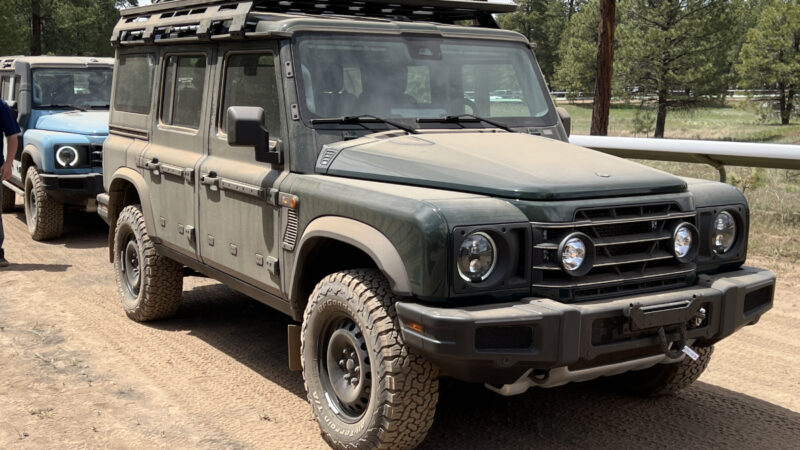Tech Tuesday Q&A: Dragging Brakes, Slide-Out Issues, RV Tires, and More
Dragging Brakes
Q: I have a problem and have run out of ideas. My rig is a 1998 Jayco Eagle Class C model 231 on a Ford E-350 chassis with 52K miles. The problem is related to a front brake job. I replaced the pads, calipers, brackets, and ABS cables on both sides. I also changed out the brake fluid; it was cloudy, and I switched it from DOT 3 to DOT 4. I have never done that before, but it was a suggestion from some that do a lot of towing and I could not find anything online to say that it could not be done. We tow a 2011 two-door Jeep Wrangler with a Ready Brute Elite II tow bar.
On the first trip out, there was a strong odor of hot brakes, which I attributed to new brakes. However, the smell persisted for the trip back. It was about 150 miles both ways. I made short trips after mods to make sure all was working.
Upon inspection, I found the front brakes were dragging hard. Once the brake pedal is depressed, the front brake pads stay against the rotors hard enough that it takes some force to get the wheels to spin. Here is what I have tried: loosening the bleeder (but fluid did not shoot out under pressure), I can get the pistons to retract using a screwdriver, and the wheel will spin normally; the brake fluid reservoir is about 1/4 inch below max, the pistons will also pry back in with the engine running. The slide pins are also well-greased, and they move there as well.
I am out of ideas unless the DOT 3 to 4 would cause this. I have about six months to prep this rig for the Alaska Dempster highway and a visit to Tuktoyuktuk.
—Wayne Wells, Livermore, California
A: When a problem like this crops up right after work was done on a particular system, it’s logical to backtrack and check for something that was done during the service to cause the problem.
It’s perfectly fine to change from DOT 3 to DOT 4 brake fluid, and there will be no harm (but not DOT 4 to 3). DOT 4 brake fluid has higher wet and dry boiling points than DOT 3, which reduces the chance of fluid boiling and loss of pedal. DOT 3 brake fluid absorbs less water from the air over time than DOT 4, which means DOT 4 has to be changed more frequently, typically every two years or so. Harsh driving conditions, such as towing or going downhill for extended periods, can accelerate the breakdown of DOT 3 brake fluid.
I called Mr. Wells to provide troubleshooting tips. Initially, I suspected that the return port in the master cylinder was clogged or the ABS valves were sticking. What you can do is have an assistant press on the brake pedal while you release the brake bleeders one at a time, looking for fluid to squirt out forcibly (goggles on!). Then work your way back to the master cylinder, joint by joint, until you have checked the whole front system. What I didn’t know is that Mr. Wells had clamped the front brake hoses with vise grips, which had damaged them internally, causing them to act as a check valve and block the release of brake pressure. I recommend not clamping the hoses (I’ve seen this happen several times), and they should be replaced after many years of service anyway. In this case, they were about 25 years old.
Mr. Wells stated: “I just got back from a test drive, and I am fairly confident that the problem has been fixed, and I believe it was my own doing. Here is a summary of what I have done:
“Took apart brake calipers on both sides and checked grease, clearances and movement. All looked good and correct. Checked proper installation of pads and slides. All looked good and correct. Replaced ABS sensor cables on both sides. With the rotors off, I went ahead and repacked the bearings and checked them. Replaced the flex hose on both sides to the brakes…. after changing them out and “proper” bleeding of the brakes, this seemed to do the trick. I went back over all parts, cables, and hoses in order to re-torque and then re-bled the brakes.
“After each step, I would put everything together and test drive. Up until the brake hose replacement, it would have brake smell. When I would release the brake at a stop light, it would not roll forward. I think the issue came down to two things. First, even though I was not getting brake fluid squinting from the bleeder, I am fairly certain I damaged the flex hoses on initial install. In high school auto shop, we were taught to use vise grips on the brake lines while replacing the calipers. Secondly, I used a one-man bleeder kit. It had a bottle with a magnet, so it could be up on the frame and the hose sets in the bleed screw. I suspect that upon the pedal’s return stroke, it was sucking air from around the insert in the bleed screw. Once I did a “proper” bleed with two people, I got a good amount of air out of the lines. Thank you for all your help and advice and more importantly your time.”
Fishtailing While Towing
Q: We have RVed for almost 50 years with travel trailers and fifth wheels. We just purchased our first motorhome, a 2024 Jayco Greyhawk 31F Class C with the JRide Plus System installed. I am concerned in regard to reports of fishtailing with the Ford F-450 chassis. As we do not plan to travel this winter, the motorhome is in storage. The plan was to install a Blue Ox towing system in the spring and tow our 2019 Ford Ranger 4×4 truck. The Ford Ranger is similar in weight to the GMC Canyon.
Any idea if the JRide system installed by Jayco will be adequate to handle any sway? I know, tow it and find out. We have dealt with sway over the years with different units and always found a solution to the problem. I have visited with Class C motorhome owners across the country, and some have opted for a tow dolly and smaller vehicle. Thanks for all the valuable information and any help regarding this question will be appreciated.
—R. Bruce Henry, Austin, MN
A: The Jayco JRide is an excellent system of quality components, but it is primarily designed to improve the ride quality for passengers. Tail sway is a known problem with motorhomes that have long rear overhangs, such as yours. I suggest you try towing without any changes, and if swaying is a concern, install a rear track bar, which reduces side-to-side rear axle movement. A popular one is the Supersteer model SS451.
Slide-Out Mechanism Failure
Q: We have a 2007 Winnebago Outlook with a slide-out for the dining and sofa areas. It has two electric motors. I am told both the motor and gearbox are no longer made. I would like to replace both complete units that consist of: the motor, gearbox, threaded rod screw, and housing all as one that is bolted to the main frame. I have contacted multiple companies and salvage yards but to no avail. Any suggestions would certainly be appreciated, as I have exhausted all my options.
I contacted Winnebago tech service, and they told me the part is no longer available from them. It is a Lippert 367174 Slide Out Actuator with a 368382 Motor and Mainboom Slide Out assembly 142598-02-000. The motor and gears no longer work. Definitely looking for the whole complete unit; as it cannot be repaired. I did get a complete unit from a place in Utah, but they do not have another. I would like to have both of the units replaced to make them uniform.
—Dennis Ziegler, Walnutport, PA
A: Typically, the reason the components fail (other than very frequent use) is due to misalignment of tracks, corrosion or binding, or lack of lubrication. This is especially true if the motor burned out. So check for problems that put strain on the slide mechanism to prevent further failures.
Try contacting Lippert online or call: 574-537-8900 and ask if they can suggest a replacement or superseded part. RV Upgrades (866-332-7881) and E-Trailer (800-940-8924) may be able to do the same. Keep checking eBay and RV salvage yards, too. It may make sense to switch over to a different system if parts are unavailable. I would start looking in that direction. Usually, motors can be rebuilt by electric motor repair shops.
RV Tire Life
We currently own a 10-year-old Itasca Meridian 36-foot motorhome on a Freightliner chassis with 22.5″ Michelin XZE2 tires. Most tire experts seem to recommend replacing RV tires every seven years when they are stored outside. Our motorhome, on the other hand, has been stored in a garage in northern Nevada since new and is exposed to the elements for six to eight weeks a year. The tires appear to be in excellent shape, with plenty of tread and virtually no visible sidewall cracking. Based on these conditions, what is the life expectancy of these tires?
—Bill Waite, Gardnerville, NV
A: There really is no reliable guideline beyond the seven-year replacement recommendation. After that time, it depends on visual inspection and how risk-tolerant you are. It’s a crap shoot. A blowout, particularly on the front, can cause an accident and/or serious damage. Some folks on a tight budget change the fronts first, and some keep the old tires only on the inner duals. You’ll have to decide for yourself.
With 10-year-old tires, I would change them. Rather than driving around on an old set of tires, which could fail anytime and leave you stranded (or worse) in a remote area with a very expensive road call or towing bill (and then you may be forced to buy whatever tires are available where you break down), you can shop around for the best tires and deal at your leisure before you leave on a trip. You’re going to need tires anyway, so why not get them right away for peace of mind?
Ask Us Anything
Questions about your road trip ride? Write us at [email protected]. Visit rv.com for more on RV gear and maintenance.
The post Tech Tuesday Q&A: Dragging Brakes, Slide-Out Issues, RV Tires, and More appeared first on RV.com.






